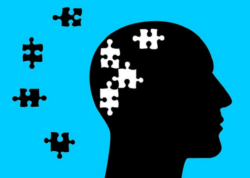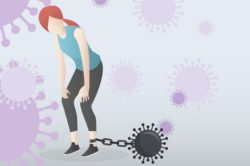This is the second in a series of articles adapted from twitter threads where I explore different aspects of the COVID-19 pandemic. The first can be found here.
COVID and Blood Clots
Let’s talk about blood clots and COVID-19. It seems the latest of a long list of problems COVID is suspected of causing is hypercoagulation. Here is just one of the many articles that have come out recently.
The most telling sentence: “It’s not necessarily the virus killing people, it’s the organ failure that happens as a result of the viral infection,” Barrett said. “If you can support people through their organ failure… the immune system will eventually clear out the virus.”
One that seems to be summarily ignored or obfuscated by the fundamental presumptions of causation – what constitutes causation and the subsequent considerations of what constitutes acceptable treatments – something we will return to in a moment.
With each of these new realizations about the process of COVID deaths, we seem only ready to attribute these symptoms to either the virus or to the pre-existing ill-health of the patient.
Never in these discussion are questions regarding how medicine contributed to either variable. Pharmaceuticals, as all chemical toxicants, while sometimes necessary, also elicit damage capable of inducing a myriad of pathologies, including hypercoagulability.
Might it be the medications that we are hurling at humanity from birth to death, but especially in the rapid fire environment of the ED and in association with COVID that might be conspiring with an already altered coagulability profile to induce thrombogenesis? It might.
A good portion hypercoagulability is acquired and even when there are genetic variants that predisposed to clotting, they often are activated or induced by environmental variables – drugs included.
For background – thrombophilias affect 10-40% of the pop, varying by coagulation defect, race and region. Those that have both a genetic and acquired element are far more prevalent.
Which ones have both genetic and acquired components?
Hyperhomocysteinemia (MTHFRs); APS, antithrombin, protein C, protein S, dysfibrinogenemia, dysplasminogenemia all have environmental activations – read illness, medications, diet, lifestyles, sitting, immobility, etc. COVID could easily be a stressor capability of activating.
Immobility too.
However, and this is a big however, so too would all of the drugs given to patients to fight this virus.
Especially against a backdrop of longstanding polypharmacy.
Reports suggest viral, bacterial and fungal infections are linked to increased risk of clotting. Rarely however, do they dissociate the actions of the pathogen from that of the drugs used to quell the infection or reduce other symptoms.
For example: Environmental Triggers of Autoreactive Responses: Induction of Antiphospholipid Antibody Formation
From my own work – from which much of these data are shared.
Digging a little deeper. From 50% – 70% of patients who develop thrombosis carry one or more genetic and/or acquired thrombophilias.
That is a huge proportion of the population that is at risk for developing clots given the right circumstances.
Current estimates suggest that 7-10% of the population carry genetic thrombophilias and up to 60% develop factors that may lead to an acquired state of hypercoagulability.
Again – 60% of the population carries factors that may lead to hypercoagulability.
Just how common are clots? Very common.
Consider: according to US. Hospital discharge records (2007-2009) show 548,000 annual hospitalizations related to peripheral blood clots or venous thromboemboli (VTE).
Among those, 349,000 were deep vein thromboemboli (DVT) and 278,000 were pulmonary emboli (PE).
These numbers, may be underestimated.
Another study, that included both hospital and community events, showed annual rate of 909,793 clotting events (378,623 DVT; 531,170 PE), and fully a third were fatal.
The rate of annual VTEs has been steadily increasing over the last decade and researchers project that by 2050, the US healthcare system may be burdened with a staggering 1.82 million VTEs annually.
Mind you, not only are these numbers underestimated, they reflect late stage clotting – clotting that causes death directly or at least noticeably and where someone noticed. These numbers do not reflect the widespread mini-clots that don’t yet cause death and go unnoticed.
Autopsy reports of women who die from birth control related blood clots report widespread clotting, not just the clots that lead to fatality.
That is because hypercoagulability is systemic and only becomes noticeable when it blocks something fully.
It is not unreasonable to assume those dying of COVID with clots observed, didn’t also develop coagulation problems long before and/or concurrent with the illness but not necessarily relative to the illness itself, but rather to the drugs given to treat the illness.
So, maybe COVID is only indirectly involved. It may be our treatments that are causing the clots and the multi-organ failures observed with these cases.
Before jumping on the COVID-causes-X bandwagon, consider other culprits. It might just reframe treatment possibilities.
References for above cited statistics are included within: Testing for Thrombophilia Before Contraceptives Are Prescribed: Background, Laboratory Tests, and Economics.
We Need Your Help
More people than ever are reading Hormones Matter, a testament to the need for independent voices in health and medicine. We are not funded and accept limited advertising. Unlike many health sites, we don’t force you to purchase a subscription. We believe health information should be open to all. If you read Hormones Matter, like it, please help support it. Contribute now.
Yes, I would like to support Hormones Matter.












I caught what appears to be COVID early in 2020. Perhaps late in 2019. It was early enough that I had not heard of COVID. And no tests were available yet. I live in a port city in WA state. One of the first noticeable symptoms was abnormal blood clotting. I normally have very thin blood. So did my Mother and her Mother. At least to my Great Grandmother. She was a nurse and found through trial and error that egg yolks and/or gelatine controlled it.
When I got sick and started having a clear viral illness I also developed thicker blood. But I never was admitted to the hospital. Or took any drugs other than some antibiotics that I have taken before without a thickening of the blood. And when information about COVID came out I took Ivermectin.
It has been a over a year and I still have too thick blood. I also have loss of taste and smell to some degree. And I have symptoms that — after having read pages on this site — appear to me to be thiamine deficiency (Beri-beri). I have just started taking thiamine (coenzymated B1), extra potassium, other B’s and vitamins, and making sure to have a source of phosphorus. It is too soon to tell if this will help me recover. But I am having a moderate “paradox” reaction.
As far as the excessive clotting. I took no drugs from the doctors other than antibiotics that I have taken before without my blood clotting excessively. And I refused any other treatment because I thought what they wanted to do with me would be damaging. The doctors expressed anger.
I thought my experience might be useful to add to your information.
Hi Dr Marrs,
Do you think there could be a connection between thiamine deficiency and blood clotting susceptibility? In this article you suggest that clotting may be due to medications, while other HM articles suggest medications can lead to thiamine deficiency. Might one infer that the medications result in TD, which results in poor cellular function due to energy shortage, which leads to clotting? I am asking because of reports of clotting associated with vaccination. In a tweet I suggested that, since vaccination presumably depends for its effectiveness on the underlying cellular machinery, if the latter is compromised then vaccination may also be compromised. I’m wondering if the clotting might be an example of this. Dr Lonsdale suggested thiamine and magnesium supplementation would be protective against COVID. Superficially this suggestion seems to have been overtaken by the availability of vaccines, but I wonder if adverse events such as clotting are an indication that Dr Lonsdale’s suggestion is still relevant.
Well, yes, likely by multiple mechanisms. Platelets rely entirely on their mitochondria for survival. When platelet mitochondria struggle and then fail we excessive ROS and eventually exploding platelets, which result in extra cellular mitochondria – a tale tell sign of impending problems – but also – signals that aggregate additional platelets. Similarly, when mitochondria are taxed cardiolipin, a phospholipid that generally resides on the inside of the mitochondria, is transferred to the outer membrane. When this happens anti-cardiolipin antibodies develop and eventually induced clotting. Anti-cardiolipin antibodies are one of the key determinants for antiphospholipid syndrome (APS), think Lupus, RA, etc. These same antibodies have been elevated in COVID. Now whether they are related to a pre-existing but undetected APS or the stress of covid, is not clear. What is clear though, whatever the precipitating factor, unhealthy mitochondria are involved. And if we would just treat the mitochondria, we could avoid some of these issues altogether. Here is an article on cardiolipin. https://www.hormonesmatter.com/covid-notes-cardiolipin-and-clotting/
I have yet to write the platelet article, but will at some point.
Hi, what is the highest dose of Thiamine you have given to a patient with symptoms of Dysautonomia?
Thank you
I am not a physician so I have not prescribed thiamine to anyone. Having said that, case reports and research, dosages vary greatly according to need and need is determined by genetics, exposures, the length of the illness and the illness itself. While most folks do just fine on 100-300mg of a TTFD version of thiamine, others require significantly more. I have observed some who require as much as a gram or more. With the HCL formulations, because it is less well absorbed, it is not uncommon for folks to require more than a gram daily.
The other issue I’m mystified by is why no one is interested in immunity. If you look at all the ships infected by SARS-Cov-2, there is a consistent 80-85% who do not test positive for the virus despite extensive exposure, and 10% who test positive and have no symptoms. WHY?
There has to be an explanation for this: diet/nutrition, prior exposure and antibodies to other coronavirus, etc. If we knew what made people immune, and it was something simple like adequate selenium levels, we might be able to make almost everyone immune, and help prevent other illness at the same time. No vaccines, no toxic drugs.
Agreed. The entire framework from which we consider treatment possibilities is entirely skewed towards medications. Few consider going any deeper to look at what supports host defenses – what supports mitochondrial fitness – which is the driver for all health.
Very interesting perspective. To begin with, here in France, they were reluctant to include nursing home death statistics following Covid-19 infection to Covid-19. The statistics are now included following an uproar about the fact that they had somehow been tinkering with the numbers. Reading this, I think they maybe weren’t so wrong to begin with after all…
It is a complicated question, whether COVID is responsible or just associated with some of these deaths. In many ways, it doesn’t matter. If one has a pre-existing conditions and then contracts COVID, is COVID responsible or are the pre-existing conditions responsible. The answer is both and it is always both. Rarely can we define the cause of death as simply X. It is always an accumulation of variables. This question regarding what does COVID cause – mechanistically is a bit different. To determine that, one would have to look for answers in a pristine and control environment – in culture – something that has relevance to understanding how the virus works but is completely at odds with real life. Real life is entirely too messy. The question I was trying to get at on this post, was whether it wasn’t the medications we were using, interacting with pre-existing conditions and the stressor of COVID to cause the clotting. A good portion of the population is predisposed to clotting both by genetic/epigenetic risks but mainly by medication use. In that case, the addition medications, the additional stressors, the additional damage of the virus is just one more straw, the last one really, that breaks the system.